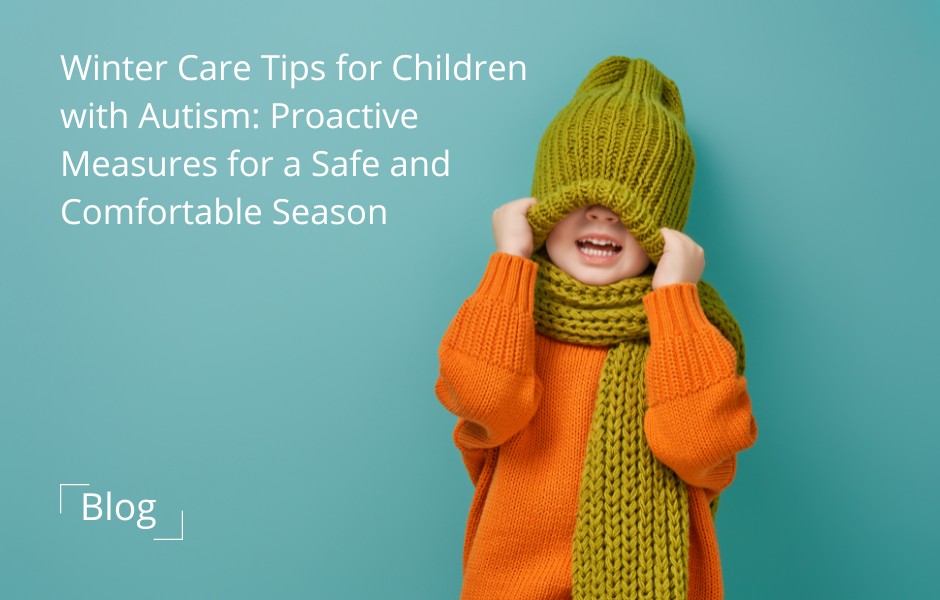
Winter Care Tips for Children with Autism : Proactive Measures for a Safe and Comfortable Season
Winter can bring a unique set of challenges for children with autism spectrum disorder (ASD) and their families. From sensory sensitivities to changes in routine, the season requires thoughtful planning and care to ensure a smooth and enjoyable experience. Here are some practical tips and proactive measures to support children with autism during winter.
Dressing for Comfort and Sensory Needs
With its heavy fabrics and multiple layers, winter clothing can be overwhelming for children with sensory sensitivities. To make dressing easier:
• Choose soft, tag-free fabrics that feel comfortable on the skin.
• Opt for seamless gloves and socks to avoid irritation.
• Practice layering with lightweight and breathable options to provide warmth without bulk.
• Allow your child to try winter gear in a calm environment to help them adjust.
Maintaining a Predictable Routine
The shorter days and holiday season often disrupt regular routines, which can be distressing for children with ASD. Minimize disruptions by:
• Sticking to consistent meal and bedtime schedules.
• Using visual schedules or social stories to prepare your child for upcoming changes.
• Keeping sensory tools or calming items handy during outings or gatherings.
Preparing for Outdoor Activities
Winter outdoor activities, like sledding or building snowmen, can be fun but may also cause sensory overload. To create positive experiences:
• Introduce new activities gradually and provide clear explanations of what to expect.
• Monitor for signs of discomfort, such as irritability or withdrawal, and offer breaks when needed.
• Ensure your child is dressed appropriately for the weather, including waterproof and insulated clothing.
Managing Indoor Energy Levels
Cold weather often means more time spent indoors, leading to restlessness. Encourage physical and sensory-friendly activities to keep your child engaged:
• Create an indoor obstacle course or sensory play station.
• Incorporate calming activities like yoga, weighted blankets, or sensory bins.
• Use interactive games or apps that promote movement and coordination.
Planning for the Holidays
The holidays bring bright lights, loud music, and social gatherings, which can be overwhelming for children with autism. Help them navigate these situations by:
• Preparing a quiet space for breaks during gatherings.
• Practicing gift exchanges or other holiday traditions beforehand.
• Explaining holiday events through visual aids or role-playing.
• Setting realistic expectations and being flexible with plans.
Monitoring Health and Safety
Winter illnesses and safety concerns, like slippery surfaces, require extra attention. Protect your child’s health by:
• Ensuring they are dressed warmly, especially in extreme temperatures.
• Encouraging regular handwashing to prevent colds and flu.
• Using non-slip footwear and supervising outdoor play to avoid injuries.
Communicating with Teachers and Caregivers
If your child attends school or therapy sessions, collaborate with their teachers or caregivers to address winter-related needs. Share strategies that work at home, such as sensory accommodations or preferred calming techniques.
Final Thoughts
Winter can be a rewarding season with the proper preparation and care. By addressing sensory needs, maintaining routines, and planning ahead, you can help your autistic child enjoy the season’s unique joys. Remember to celebrate small victories and prioritize your child’s comfort and happiness—the little moments make winter truly special.
| Tweet |

